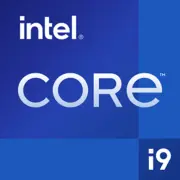Intel Core i9-10900K

2025年のIntel Core i9-10900K:伝説の10コアプロセッサは今購入する価値があるか?
ゲーマー、エンスージアスト、プロフェッショナル向けの現状分析
主な特長:アーキテクチャ、プロセス技術、主要特徴
2020年に発売されたIntel Core i9-10900Kは、今でも多くのユーザーにとってアイコニックな選択肢です。年数が経ってもその性能は驚異的です:
- アーキテクチャ:Comet Lake-S(14nm+++)。
- コア/スレッド数:10/20。
- クロック周波数:ベースが3.7GHz、ターボモードの最大は5.3GHz(Turbo Boost Max 3.0)。
- キャッシュ:20MB L3。
- TDP:125W(オーバークロック時の実消費電力は250Wに達する可能性あり)。
- グラフィックス:Intel UHD Graphics 630(4Kを基本的にサポートするが、ゲームには不向き)。
主な特徴:
- マルチスレッド負荷のためのHyper-Threadingサポート。
- オーバークロック用のアンロックマルチプライヤー。
- 自動周波数向上のためのThermal Velocity BoostおよびIntel Adaptive Boost技術。
2025年のパフォーマンス:
- Geekbench 6:1753(シングルコア)、9267(マルチコア)。
- ゲーム(例:Cyberpunk 2077 Phantom Liberty)では、RTX 4070 Tiと組み合わせて1080pのウルトラ設定で90-120 FPSを実現。
- Blenderでのレンダリング(BMWシーン)では約7.5分を要し、Ryzen 7 5800Xレベル。
互換性のあるマザーボード:ソケットとチップセット
このプロセッサはLGA 1200ソケットを使用しており、次のチップセットに対応しています:
- Z490:オーバークロックに最適な選択肢(例:ASUS ROG Maximus XII Hero)。PCIe 3.0をサポートし、RAMオーバークロックは最大4800MHz(XMP対応)。
- B460/H470:オーバークロック不可の予算向けマザーボード(ASUS TUF Gaming B460-Plus)。RAMのクロックは2933MHzに制限。
- H410:オフィス用の構築向け(Gigabyte H410M S2H)。
2025年における重要点:
- 新しいLGA 1200マザーボードは既に製造されていません。在庫の価格はZ490で$120からH410で$60まで。
- 最大のパフォーマンスを追求する場合は、強力なVRMを搭載したモデルを探してください(例:MSI Z490 Tomahawk)。
対応メモリ:DDR4と制限
i9-10900KはDDR4のみに対応しています:
- 公式には2933MHzまでサポート(オーバークロックなし)。
- Z490チップセットとXMPプロファイルを使用することで最大4800MHzのモジュールを使用可能。
推奨内容:
- ゲーム用:2x16GB DDR4-3600 CL16(例:G.Skill Trident Z Neo)。
- 作業用:4x8GB DDR4-3200 CL18(容量が重要で、速度は二の次)。
なぜDDR5ではないのか?
Comet LakeアーキテクチャはDDR5に対応していません。これは2025年のアップグレードにおける最大の欠点です。
電源ユニット:出力計算と例
i9-10900Kを搭載したシステムを構築する際には以下を考慮してください:
- オーバークロックなし:125W(プロセッサ) + 250-300W(RTX 4070クラスのグラフィックスカード)。
- オーバークロックあり:250W(プロセッサ) + 350W(RTX 4080)。
推奨電源ユニット:
- 最低でも650W(Corsair RM650x、80+ Gold、$110)。
- オーバークロックやハイエンドGPU用には850W(Seasonic PRIME GX-850、$160)。
アドバイス:電源ユニットにはお金を惜しまないで!安価なモデル(EVGA W1やThermaltake Smart)はピ peak loadに耐えられない可能性があります。
2025年のi9-10900Kの長所と短所
長所:
1. ゲーム性能:高いIPCと最大5.3GHzの周波数でスムーズなFPSを提供。
2. オーバークロックの潜力:良好な冷却環境なら、すべてのコアで5.1GHzに達するのは簡単。
3. 価格:新しいプロセッサは$250から販売(Ryzen 7 7700Xよりも安価)。
短所:
1. エネルギー効率:14nm vs. 5nm(Ryzen 8000) — 高温と電気料金増加。
2. PCIe 4.0/5.0未対応:SSDやグラフィックスカードがフル速度を発揮できない。
3. プラットフォームは「死んでいる」:マザーボードを交換せずに新しいCPUへのアップグレードができない。
使用シナリオ:i9-10900Kがまだ有効な場所は?
1. ゲーミング:1080p/1440pに最適。RTX 4070 Tiとの組み合わせで、あらゆるAAAタイトルをこなせる。
2. 作業用タスク:Premiere Proでのビデオ編集、SolidWorksでの3Dモデリング。
3. ストリーミング:NVENC + 10コアがOBSでのエンコーディングをラグなしで処理。
実例:
ストリーマーのための構成:i9-10900K + RTX 4060 + 32GB DDR4。1080p60で録画 + Twitchでのストリーミング — CPU負荷は70%を超えない。
競合他社との比較
1. AMD Ryzen 7 5800X3D($300):
- 長所:ゲームにおいてより良いパフォーマンス(+15% FPS)、PCIe 4.0サポート。
- 短所:8コア対10のIntel。
2. Intel Core i5-14600K($320):
- 長所:最新のアーキテクチャ(Raptor Lake)、DDR5、PCIe 5.0。
- 短所:価格が高く、プラットフォームの交換が必要。
3. Ryzen 9 7900($400):
- 長所:12コア、5nm、エネルギー効率。
- 短所:価格が高く、LGA 1200の所有者にとってアップグレードが複雑。
結論:i9-10900Kは、値下げがあれば競争力を持つが、旧プラットフォームの基盤での構築が理想的。
実用的な構築アドバイス
1. 冷却:
- 最低でも:DeepCool AK620($60)。
- オーバークロック用:Arctic Liquid Freezer II 360($120)。
2. ケース:通気性に優れたモデルを選択(Lian Li Lancool 216)。CPU温度は85°Cを超えてはいけません。
3. 熱伝導グリース:Thermal Grizzly KryonautまたはArctic MX-6。
4. BIOS:最新バージョンを更新して、安定性を向上させましょう。
総評:2025年にi9-10900Kが適しているのは誰か?
このプロセッサは次のような方に検討すべきです:
- 予算が限られたゲーマー:古いLGA 1200システムのアップグレードを望む方。
- エンスージアスト:オーバークロックに挑戦したい方。
- プロフェッショナル:DDR5に対して高価格を支払わずにレンダリングのための10コアが必要な方。
代替案:ゼロからPCを構築する場合は、Ryzen 5 8600GまたはCore i5-14600Kを選んだ方が良いです。これらは同価格帯で最新の技術を提供します。
2025年4月の新しいi9-10900Kの価格:$250-$300(在庫処分品)。過剰支出しないように、保証の有無を確認してください!
基本
CPUの仕様
メモリ仕様
GPUの仕様
その他
ベンチマーク
他のCPUとの比較
ソーシャルメディアで共有する
または当サイトへのリンクを追加
<a href="https://cputronic.com/ja/cpu/intel-core-i9-10900k" target="_blank">Intel Core i9-10900K</a>